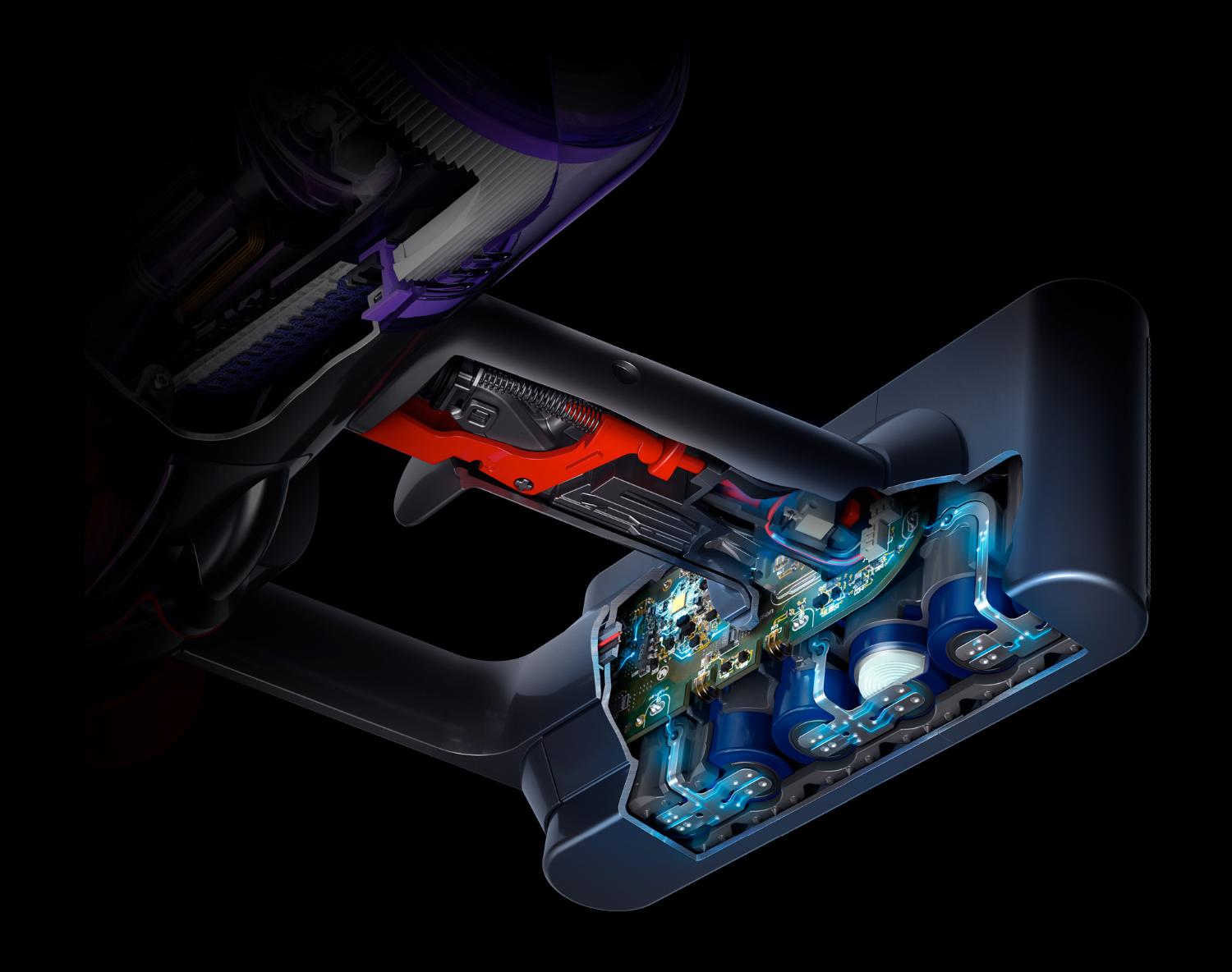
Maintain your battery. Maximise its life.
Dyson battery life is determined by multiple factors – like quality of maintenance and storage. It's not defined by a set number of years. So there are things you can do to keep your Dyson battery optimised and maximise its run time.
Tested again and again
Our batteries undergo over 2,000 hours of rigorous testing, to strike the delicate balance between energy density, power density and lifespan. The battery cells are uniquely capable – manufactured to meet our particular demands.
Getting the best from your battery
We engineer vacuums that are simple to use and easy to look after. But batteries contain complex chemical structures that react to their environment. We've put together some tips that will help you to get the maximum life from your battery.
-
Use high power mode less
Your vacuum is designed to be used in Auto or Normal mode for everyday cleaning. These can be found and changed at the top or back of your vacuum. Max or Boost modes are meant for powerful, intensive bursts of spot cleaning. Using them constantly speeds up degradation of the battery. If your machine has Eco mode, run time is maximised for a longer clean.
-
Avoid use in extreme heat temperatures
Hot environments speed up battery aging. So it's best to avoid cleaning the car in hot weather or leaving your vacuum in rooms that experience direct sunlight for prolonged periods. The same goes for cold porches and garages in winter.
-
Store your vacuum at room temperature
Heat sources, such as radiators, can damage the battery. We recommend that you store your vacuum at temperatures between 18°C–28°C, away from direct sunlight and out of boiler cupboards.
-
Let it cool, but not too much
You can preserve the life of your battery by letting your machine cool down after use – before connecting it back up to the dock to recharge.
Your machine won’t operate or charge if the ambient temperature is below 3°C (37°F). This is designed to protect both the motor and battery. -
Give it a break
By letting the battery run down to empty at least once a month, you'll help to prolong its life. If you have a spare battery, we recommend you swap them out from time to time, so that they both have time to naturally discharge.
-
FAQs
Dyson offers a 2-year guarantee on all cordless machines and parts, including the battery. If your machine is within its guarantee period, we'll replace the battery for you free of charge. If you're an owner, log into My Dyson to see whether you are under guarantee.
Dyson goes to great lengths to use the best battery technology. We perform significant safety checks and quality controls as part of the process. Only by using a genuine Dyson battery are you ensuring that your machine continues to work as intended, and that your guarantee remains intact.
Boost and Max mode can be used for powerful, intensive bursts of spot cleaning. These modes affect the run time of your vacuum, so we encourage you to use them only on certain areas.
Dyson products are made from high grade recyclable materials. The battery should be removed from the machine before it's disposed of and recycled in accordance with local ordinances or regulations. If your battery needs replacing please call us on 08002980298 so that we can help you, or find a replacement online.
Lithium-ion batteries are built to last, with energy and power packed into a small area. Over time, all batteries are subject to degradation. So if your run time has declined when the machine is not in Max / Boost mode, it might be time to buy a new battery. All our machines come with a 2-year initial guarantee that includes the battery.



